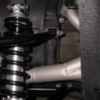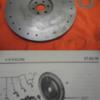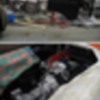I was reading through my Pantera manual on installing and removing the engine and transaxle.
It tells you to remove the exhaust, etc. before pulling the engine/ZF unit or installing it. I have also read in the forums that I should remove the distributor when I reinstall the motor as to not break out the back window.
Has anyone ever installed the motor with headers on the engine already? The engine bay is so tight that I thought it would be easier to make sure you don’t have any exhaust leaks but wondered if there was enough room to do this.
Thanks for your help.
Original Post






